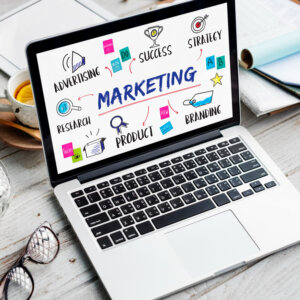“It is one of the most beautiful compensations of this life that no man can sincerely try to help another without helping himself.”
Ralph Waldo Emerson
This post is part 2 in a series of posts dedicated to the committed relationships with stakeholders I’ve worked with over the past year, who continue to inspire me to follow their example of helping others. This post continues where we left off from my previous post on tips to build relationships with stakeholders, inspired by lessons learned and a recent fundraising letter I received from my alma mater.
Share a vision
Remain positive and communicate a central idea—a vision that will take your program
onward and upward. The fundraising letter gradually built up to this vision: “Everyone deserves
a chance.” Build relationships and talk to participants and staff to help build a mutual vision
that resonates and revitalizes.
Encourage participation in the evaluation, regardless of the amount or type.
Every bit counts. Key stakeholders can participate in different ways.
Encourage stakeholders to give the gift of time. Seek new ways to involve them. Invite them to share their responses to evaluation-related drafts such as surveys, evaluation plans, and especially evaluation reports. Offer evaluation-related training to increase your organization’s capacity. I have found our community partners and volunteers to be incredibly valuable allies in planning evaluations. They have experienced the needs that the programs address. They are experts in their own rights. I am so thankful for their heartfelt advice and the gift of their time.
The time it right.
Isn’t timing everything? The letter arrived in my mailbox during the holiday season, when some may be more inclined to give. Consider signs of readiness to participate in evaluation-related activities. What is the energy level of the group?1 How enthusiastic are people?
Be willing to listen.
The fundraising letter related a firsthand account of a student’s story. Do your best to hear from program participants directly. Evaluation offers a more objective and systematic way of collecting this information. I appreciate the value of gathering evaluation data from interviews and focus groups, that is, qualitative data: such methods offer a glimpse into participants’ lives and can lead to insights that a survey cannot. This is what I enjoy most about the work I do—getting to know the real people whom we serve.
“Stop, look, and listen.”
I’ve been learning recently the need to:
- Stop! “Stop me”—my own preconceived notions, plans, and ideas1.
- Look! Observe body language and context of people’s comments1.
- Listen! Stopping and looking helps me to listen to what is really being said and to what is not being said.
Sharing the stories of people we’ve listened to has the potential to impact program decision-making.
These are 7 ways that a fundraising letter’s message stayed with me. I hope these seven tips also help us strengthen our relationships with our own evaluation stakeholders.
Many of us desire to give back to our communities in some way. We desire to reach out and touch the future—to play a part in bringing about tangible outcomes that make the world a better place. Let’s nurture that desire to give in to the stakeholders of all our evaluations.
1 Krueger, R. (1988). Focus Groups: A Practical Guide to Applied Research.
——————
For more resources, see our Library topic Nonprofit Capacity Building.
________________________________________________________________________________________________________________________________________________________________
Priya Small has extensive experience in collaborative evaluation planning, instrument design, data collection, grant writing, and facilitation. Contact her at [email protected]. See her profile at http://www.linkedin.com/in/priyasmall/
 Sections of this topic
Sections of this topic

















